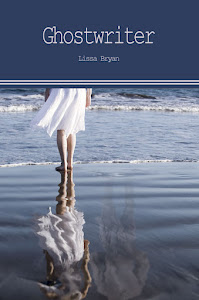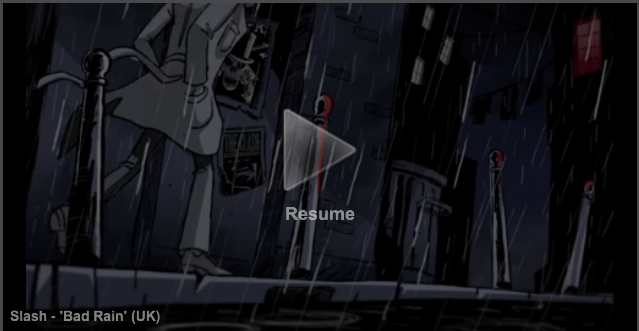In my earlier article, The Invaders – Classic Sci-fi TV, I made the comment that its opening title sequence was unarguably the most atmospheric for any TV show ever made. The way it ominously leads you into the premise of the show and the protagonist’s situation is, to my mind, quite simply perfect. The eerie music, the heavy, monotonous tones of the narrator bringing you up to speed with how the nightmare began for architect David Vincent is a touch of genius and has never been bettered. However, there is another show with an opening title sequence that works in much the same way and, in my opinion, is just as evocative. I’m talking, of course, about The Persuaders! which, with its blend of glamour, action and humour, really was and still is, a thoroughly watchable romp.
Again, the opening titles, this time accompanied by John Barry’s superb theme tune (Did this man write some great music or what?), are pure class and do a great job of informing us what the show is about. Using a split-screen layout they reveal the backgrounds of the two main characters of the show played by Roger Moore and Tony Curtis. Side-by-side, a pair of folders, one red and one blue, labelled Danny Wilde and Brett Sinclair narrates their lives via photographs and old film of the two men from childhood through to their current status as international playboys. Live footage and torn newspaper clippings offer glimpses into their lifestyles and explain, in part, their various successes and then the sequence culminates in showing the two men enjoying a life of glitz and glamour in exotic locations surrounded by beautiful women, fast cars, diamonds and Champagne.
The premise of the show is straightforward and fairly typical of television at the time which for the best part of a decade had been churning out one action adventure series after another. Two men from very different backgrounds are brought together by a retired judge and persuaded to team up and solve cases which the courts cannot. Danny Wilde (Curtis) hails from the slums of New York City, a streetwise urchin made good. He escaped a tough neighbourhood and a probable life of crime by enlisting in the U.S Navy and later became a millionaire several times over via Wall Street and the oil business. Brett Sinclair (Moore) was born with the proverbial silver spoon in his mouth. An English aristocrat – the 15th Earl of Marnock to be precise – he attended Harrow and Oxford before serving as an officer in a Guards Brigade, then became a Grand Prix racer and race horse owner. The two characters could not have come from different backgrounds and much of the humour of the show plays on this fact as well as the general differences between British and American customs. The two actors’ playful banter and adolescent attempts at oneupmanship are what help make this show so great.
Laurence Naismith plays Judge Fulton, the man who brings this mismatched pair together. Despite being retired from the Bar, he is determined to continue his personal crusade for justice but needs someone to do his legwork for him. So, he arranges for the two men to meet on the French Riviera and coerces them into helping him. Having studied them and deeming them ideal for his purposes, he presents them with an offer they can’t refuse – to be of use to society and to do good for mankind rather than to waste away their lives in Martini hazes and all night parties. Naturally they elect to help him (particularly when they learn a beautiful woman is involved) and voila, a sparkling new crime fighting duo is born!
Each episode is an adventure in itself, sometimes set in a glamorous European locale but more often based out of Sinclair’s London home (just around the corner from St. James’s Park tube, if you’re interested). By today’s standards, the stories are rather simplistic but they always look terrific and are great fun to watch. The show also has certain signatures. There are always pretty women, there are always punch-ups and there is always humour even when the heroes are at gunpoint – fortunately both actors had wonderful comic timing. And then, there are the cars they drove – a handsome Aston Martin DBS for Sinclair and a gorgeous Ferrari Dino 246 GT for Wilde. A testament to the cachet the show was expected to carry was that both cars were given to the show’s producers courtesy of the manufacturers. I mean, come on, what’s not to like. This show had it all, it had to be a success. Right?
The series was released in the autumn of 1971 and was a big hit pretty much everywhere except the US, which was a vital market for the show’s producers. American audiences however, were not persuaded to switch over from Mission: Impossible, which aired on an opposing channel on Saturday nights and because of this, the ABC network pulled the plug even before all 24 episodes were shown. This resulted in the show not being commissioned for a second season.
Despite some speculation about the working relationship between Moore and Curtis, you cannot help but surmise that they had an absolute blast making this series. Both men appear to be in their element throughout and for me, their on-set chemistry was simply wonderful. Roger Moore was directly involved in the production of the series and already had a good relationship with Robert S. Baker and Lew Grade, having achieved great success in another ITC production, The Saint. Apparently, the three of them sealed the deal of this new series with a simple handshake and no contracts were signed. Curtis was actually Moore’s third choice for the role of Danny Wilde after Rock Hudson and Glenn Ford passed on the offer – luckily for us. At the time, The Persuaders! was the most expensive British TV show produced with each episode costing on average £100,000 (that’s almost £2,000,000 in today’s money) but with the locations and the general high quality of filming, it’s no surprise as few television shows offer quite the spectacle of The Persuaders!
Both stars were of similar age during filming although, where Curtis had enjoyed great success in Hollywood throughout the 1950s and ’60s his star was waning. His work would become less significant and he appeared often as a special guest star on series and movies made for TV but Moore’s stardom was about to go supernova with his donning of James Bond’s tuxedo in 1973. Moore has often said that prior to the filming of Live and Let Die, the Bond producers asked him to cut his hair and to lose some weight and seeing how trim he appears in his first Bond outing compared to his appearance in The Persuaders!, it’s obvious he succumbed to their request. He reportedly gained 20lbs over the course of filming The Persuaders! and he attributes this to the use of real Champagne during filming. And I for one, quite believe it.
So, if you’ve never caught this show, I recommend you give it a try. To witness these two great charismatic stars having an absolute hoot together is a wonderful thing to behold and one that we may never see again. Yes, I’m aware of the rumours of a movie remake, but in all honesty, will a Starsky and Hutch style remake ever live up to the twenty four classic hour-long episodes? I think not.




